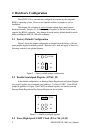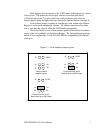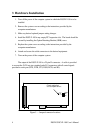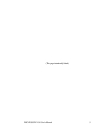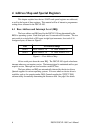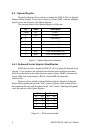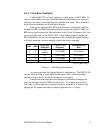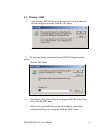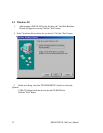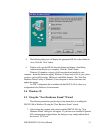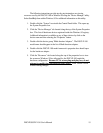
4.4.2 Clock Rate Multiplier
A standard RS-232 serial port operates at a clock speed of 1.8432 MHz. In
order to achieve higher data rates, Quatech Enhanced Serial Adapters can operate at
two times, four times or even eight times this standard clock speed. This is controlled
by the clock rate multiplier bits in the Options Register.
Software can determine the UART clock frequency by reading the clock rate
multiplier bits RR1 and RR0 in the Options Register as shown in Figure 10. RR1 and
RR0 can be set by writing to the Options Register if the X2 and X4 jumpers (J4-J5) are
all removed. This card has the 16550 UART. If one of these jumpers is applied, the
RR1 and RR0 bits are forced to the appropriate value. Reading the Options Register
will always return the clock rate multiplier at which the board is operating.
* 16750 UART only
921.6 kbaud *14.7456 MHzX811
460.8 kbaud *7.3728 MHzX401
230.4 kbaud3.6864 MHzX210
115.2 kbaud1.8432 MHz
X1
(default)
00
Maximum Data
Rate
UART Clock
Frequency
Clock Rate
Multiplier
RR0RR1
Figure 11 --- Rate Register bit definition
At powerup and reset, the Options Register is initialized to 0. The DSCLP-100
will thus powerup in the x1 mode with software control of the clock rate multiplier
enabled as long as the X2, X4, and X8 jumpers are not installed.
Software can control high baud rates through a combination of changing the
clock rate multiplier and the UART baud rate divisor. For example, a baud rate of
230.4 kbps could be achieved by setting the clock rate multiplier to X2 mode (or by
applying the X2 jumper) and setting a software application for 115.2 kbps.
DSCLP/SSCLP-100 User's Manual 9




